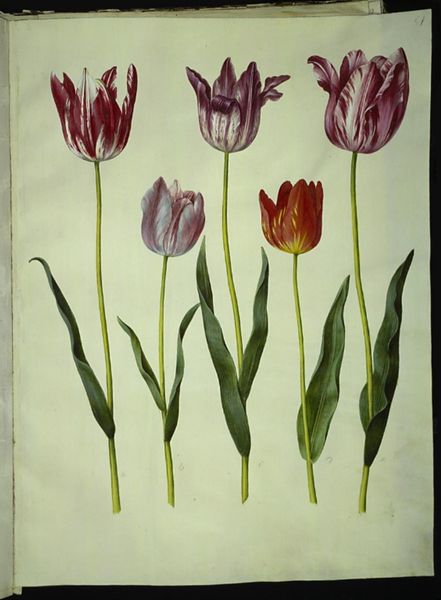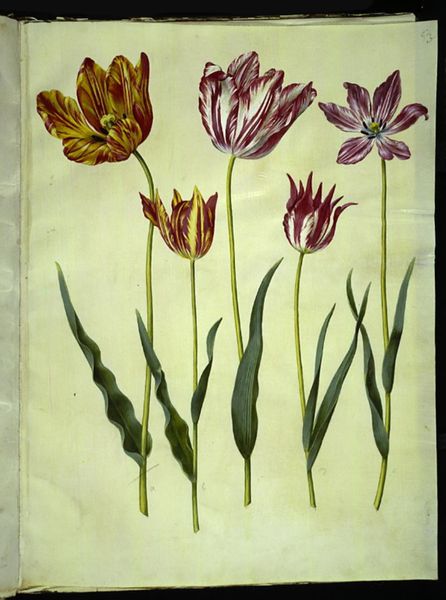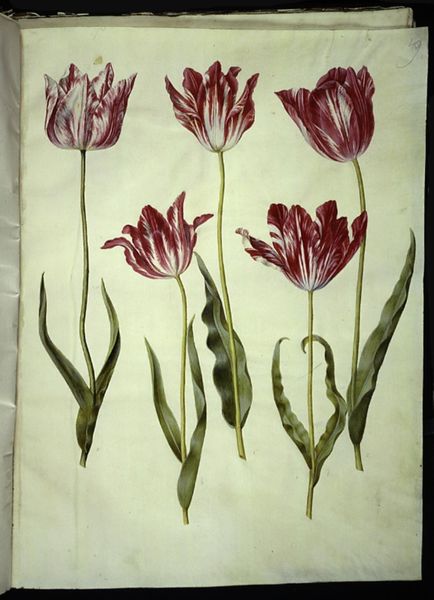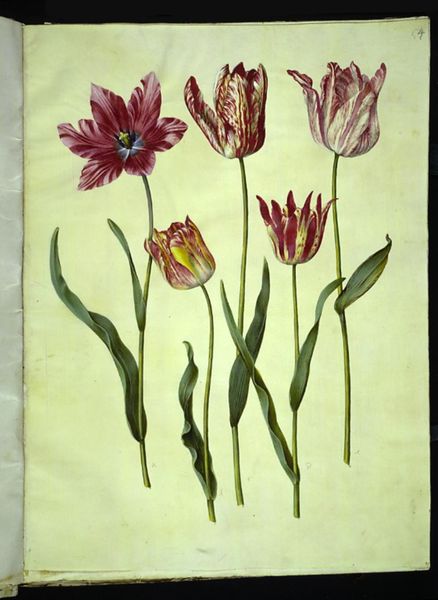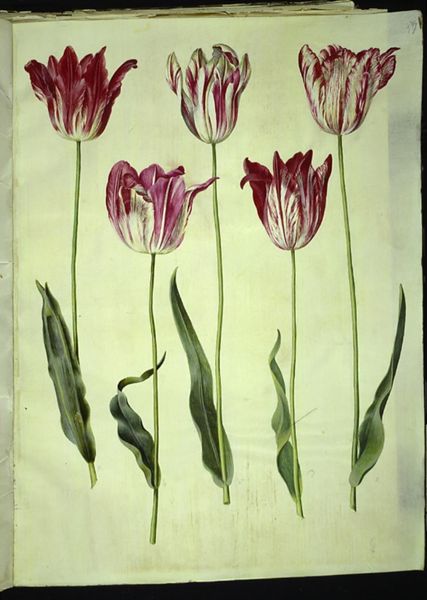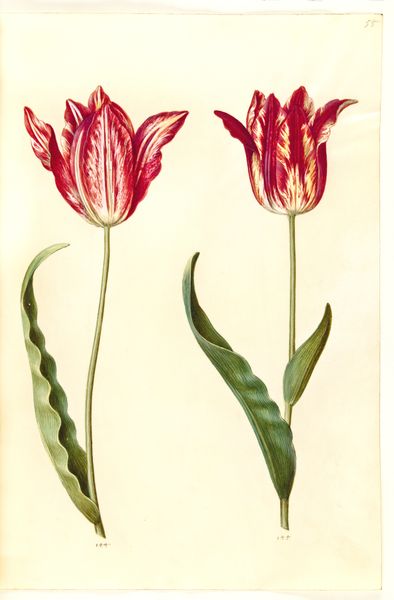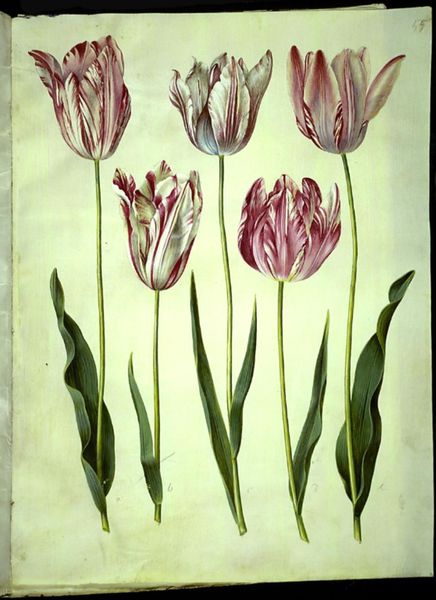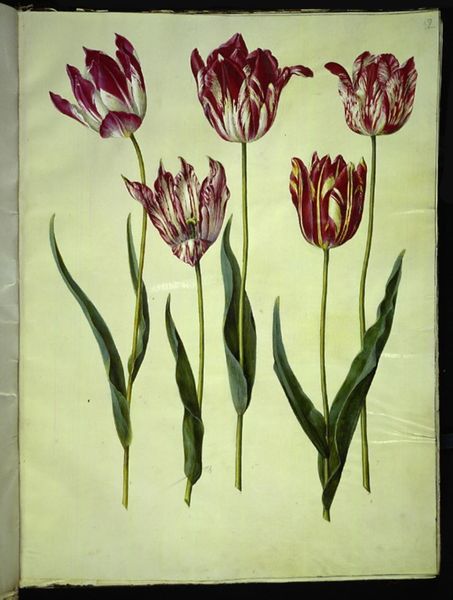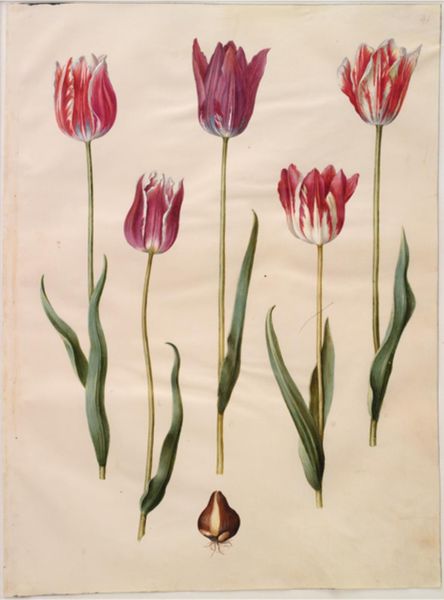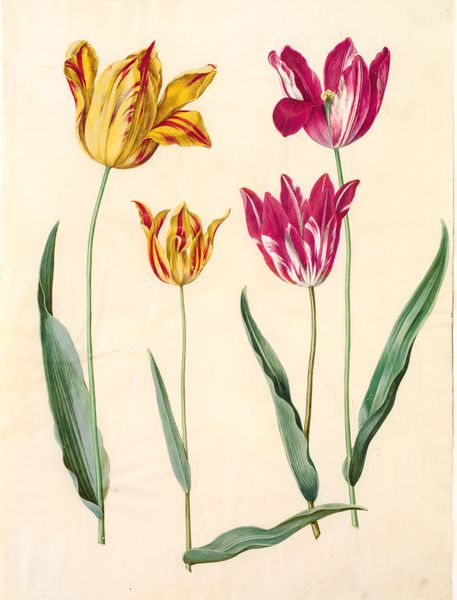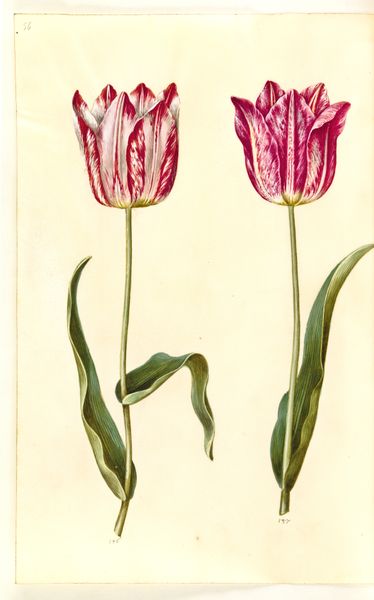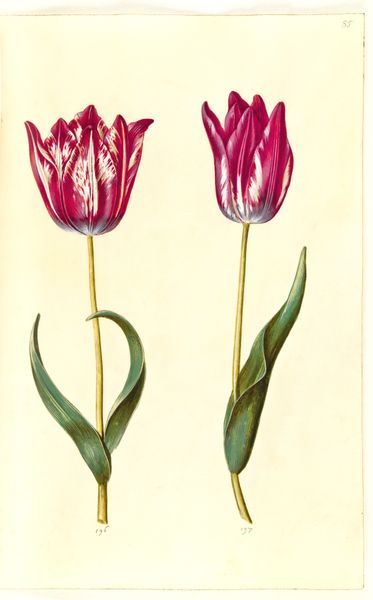
drawing, coloured-pencil, gouache
#
drawing
#
coloured-pencil
#
gouache
#
coloured pencil
#
naive art
#
academic-art
Dimensions: 505 mm (height) x 385 mm (width) (bladmaal)
Here, in this botanical study by Hans Simon Holtzbecker, we see tulips rendered with precision in watercolour. In the 17th century, the tulip was not merely a flower but a symbol of prosperity, a reflection of the intense “Tulip Mania” that gripped the Dutch Republic. The tulip’s allure extends beyond its aesthetic appeal. Consider its presence in Ottoman art, where it symbolized paradise and divine beauty. The motif resurfaces in Dutch still lifes as a memento mori, reminding us of life’s fleeting nature and humanity’s obsession with earthly treasures. The symbolism of the tulip is far from linear. Its journey through art history shows the complex dance between beauty and ephemerality, wealth and mortality, constantly evolving across cultures. It’s a powerful reminder of how our collective psyche shapes the meaning we assign to the natural world.
Comments
No comments
Be the first to comment and join the conversation on the ultimate creative platform.
